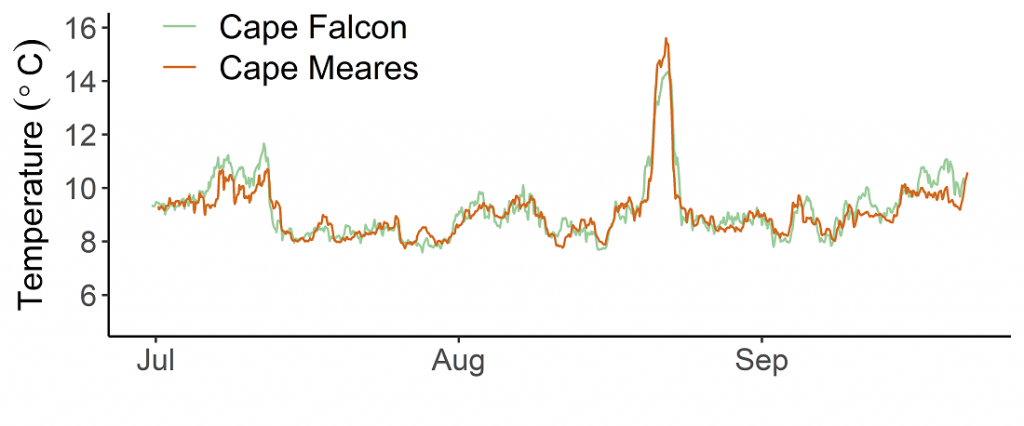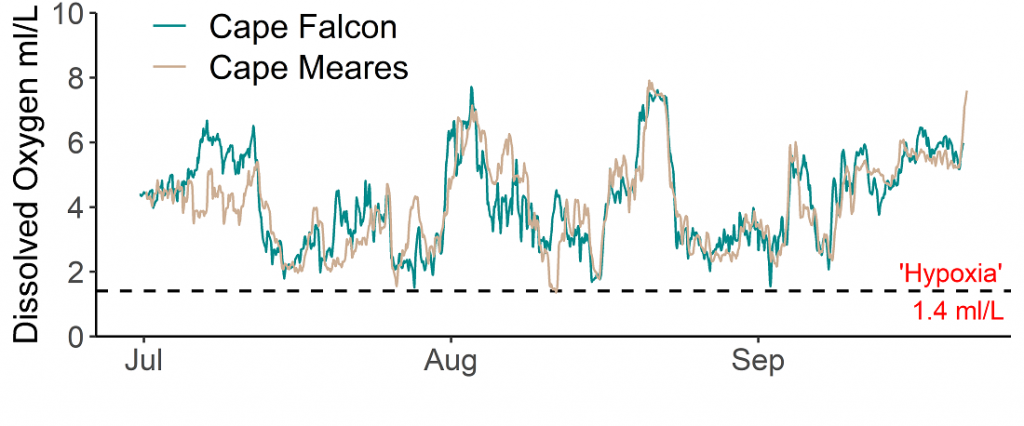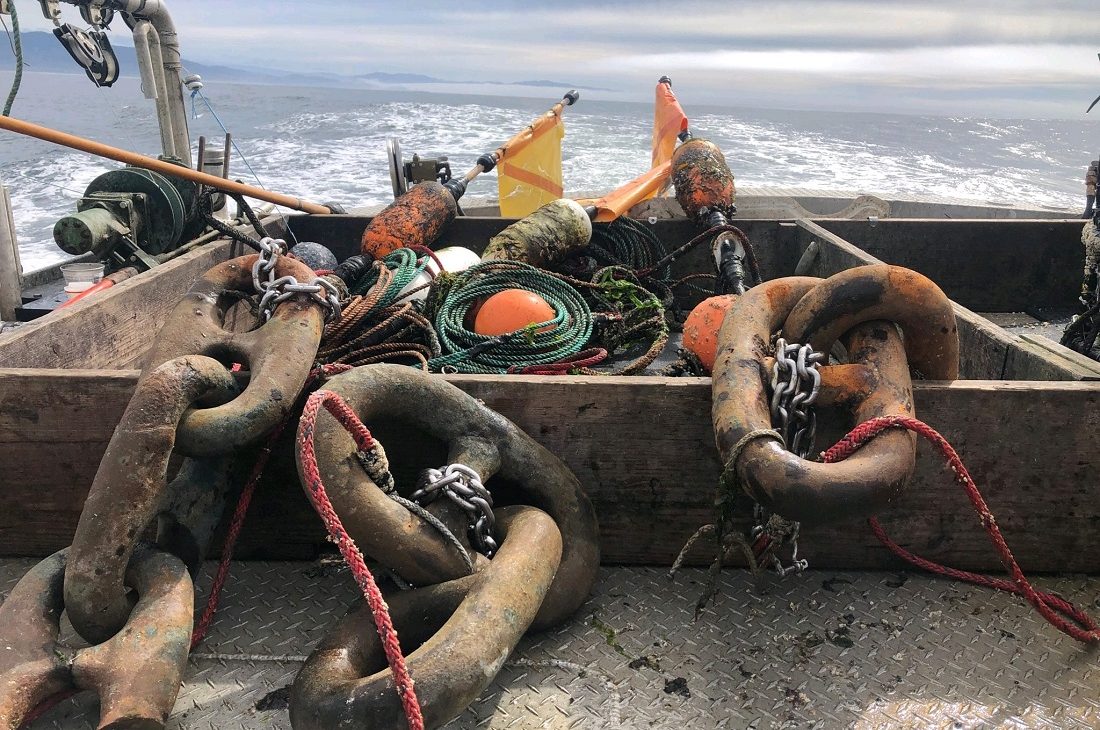To call last year a whirlwind would be an understatement. The COVID-19 pandemic affected all our lives and many aspects of the ODFW Marine Reserves Program’s field surveys in 2020. Despite those challenges, we were successful in collecting oceanographic data.
In our efforts to balance safety with the need to collect data, we found an opportunity to collaborate with a local fishing vessel. The F/V Lady Lee, out of Garibaldi, was able to set out a set of moorings with oceanographic sensors for our team. This was the first year we were successful in deploying and retrieving sensors at both the Cape Falcon Marine Reserve and the nearby comparison area, at Cape Meares, which is open to fishing. Having sensors in at both sites enables us to directly compare ocean conditions between these two locations.
Why is Oceanographic Data Important?
Oceanographic variables such as temperature, salinity, and oxygen levels have great influence on ecosystems and marine communities. Collecting these data along the Oregon coast provides valuable context to our other survey data and will help us better understand any long-term changes we might see over time.
What Did We See in 2020?
The first figure shows how temperature varied between July and September, 2020 at both Cape Falcon Marine Reserve and Cape Meares. Our team was interested to learn how similar the trends in temperature were between these two sites. The large spike in temperature reflects a shift in direction or weakening of the predominantly northerly winds found on our coast in the summer. The change in wind condition allows warmer offshore surface waters to move in towards the coast for short durations of time.

The second figure shows levels of dissolved oxygen through time. The horizontal dashed line indicates the threshold at which ‘hypoxia’ occurs. Oxygen levels below 1.4 ml/L are considered hypoxic, and sustained periods of hypoxia can cause animals to migrate out of the area or even result in death. We did not observe any periods of hypoxia while the sensors were in the water.

We will be continuing these exciting oceanographic monitoring effort in the years ahead and pairing these data with our other ongoing long-term monitoring efforts. A big thank you to those who have collaborated with ODFW to make this research possible.
